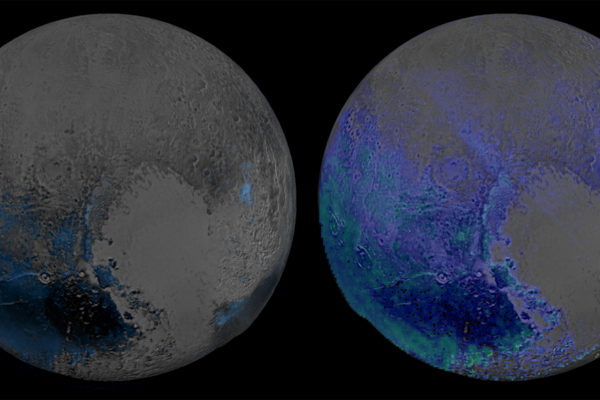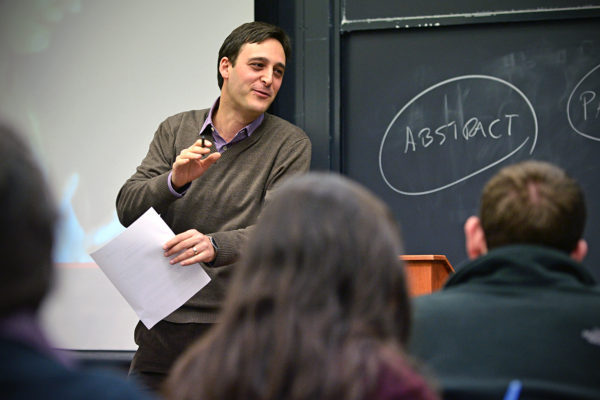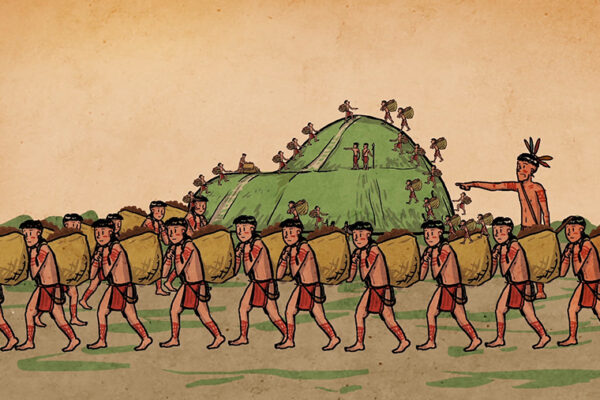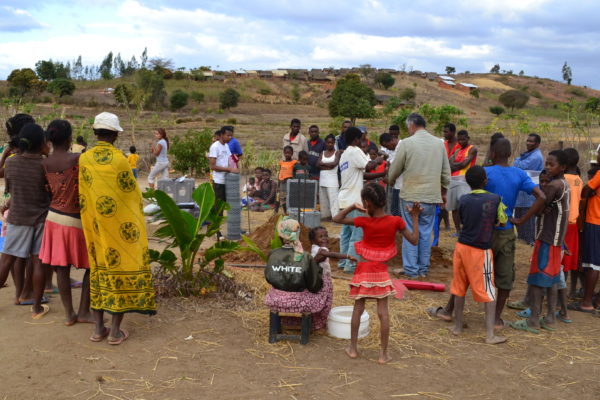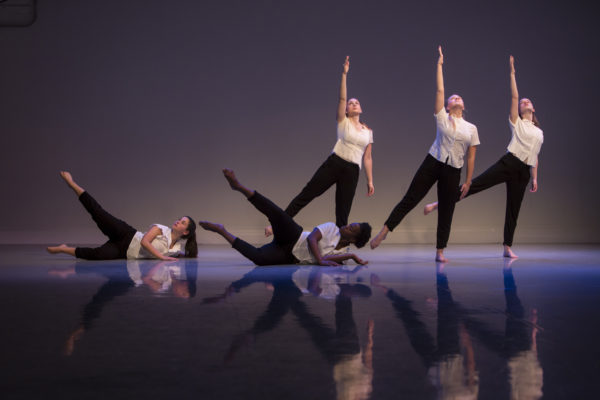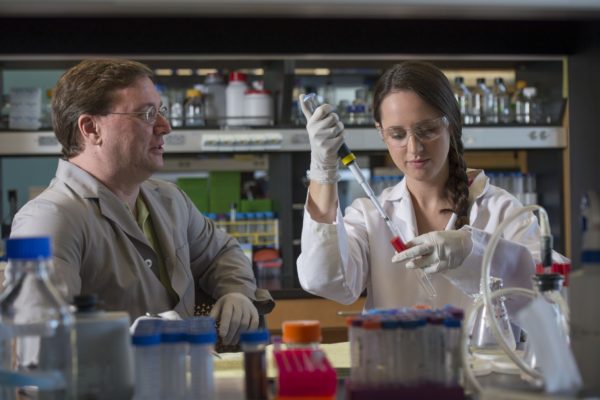From debate volunteer to debate insider
In 2004, Arden Farhi, AB ’07, was a student volunteer for the Bush-Kerry debate. He was assigned to work with CBS and knew he’d found his calling. Now he travels the country and the world producing segments for CBS News’ chief White House correspondent.
Could there be life in Pluto’s syrupy sea?
Pluto is thought to possess a subsurface ocean, which is not so much a sign of water as it is a tremendous clue that other dwarf planets in deep space also may contain similarly exotic oceans, naturally leading to the question of life, said one co-investigator with NASA’s New Horizon mission to Pluto and the Kuiper Belt.
Infante nominated for Pushcart Prize
Ignacio Infante, associate professor of comparative literature in Arts & Sciences, has been nominated for the prestigious Pushcart Prize by the literary journal Asymptote. He was nominated for his co-translation of Chilean poet Vincente Huidobro’s work “Temblor de cielo.”
Washington People: Henry Schvey
Henry Schvey is a steadfast presence in the Performing Arts Department in Arts & Sciences at Washington University in St. Louis, having directed more than 25 plays in his nearly 30-year tenure, in addition to teaching and writing. Now, a new memoir is adding to his body of work in the place he calls home.
Mystery in Louisiana
Lately it’s been fashionable to say that hunter-gatherers lived better than we do. They had more free time, they followed more natural sleep cycles, and so on. But is our picture of hunter-gatherer society right? A giant earth mound in Louisiana suggests we know less than we think. Washington University anthropologist Tristram R. Kidder explains.
WashU Expert: Republican push for REINS Act could backfire, says congressional expert
Conservative columnist George Will is encouraging Republicans to have the Regulations from the Executive in Need of Scrutiny (REINS) Act passed through the U.S. Congress and ready for Donald Trump’s signature on his first day in office.
While some see the REINS Act as a way for Congress to reassert its power to control the regulatory rulemaking process, an immediate push for its passage could force the first big battle over Democrats’ use of the filibuster and make it more complicated for Republicans to repeal Obamacare, says Steven S. Smith, a congressional expert at Washington University in St. Louis.
Two alumni named Rhodes finalists
Two Washington University in St. Louis graduates were finalists for a Rhodes Scholarship, one of the world’s most prestigious academic awards: Damari Croswell, an Arts & Sciences alum, and Yidan Qin, an engineering alum.
Scanning Madagascar
The island of Madagascar off the coast of Africa was largely unexplored seismically until recently. The first broadband seismic images of the island help solve a longstanding mystery: why are there volcanoes far from any tectonic boundary?
‘A rite of passage’
Washington University Dance Theatre will present “Critical Mass,” its 2016 concert, Dec. 2-4 in Edison Theatre. The annual event will feature dozens of dancers, selected by audition, performing new and original choreography by seven faculty and visiting artists.
Ambidextrous enzyme
Plant scientists at Washington University in St. Louis have isolated an enzyme that controls the levels of two plant hormones simultaneously, linking the molecular pathways for growth and defense. Plant scientists have long known that distinct plant hormones can interact in complex ways, but how they do so has remained mysterious.
View More Stories

